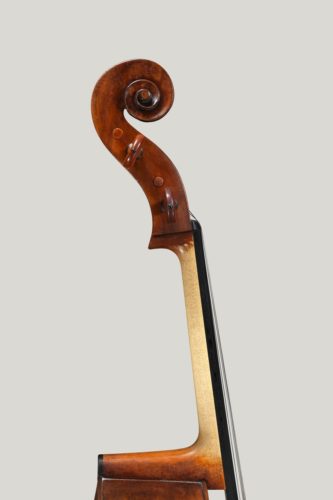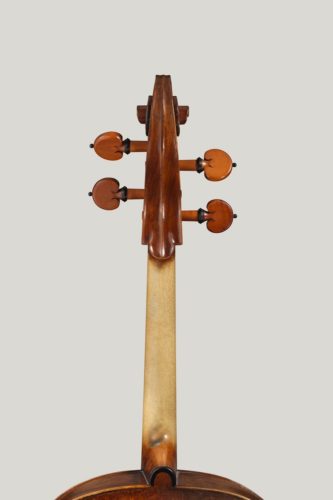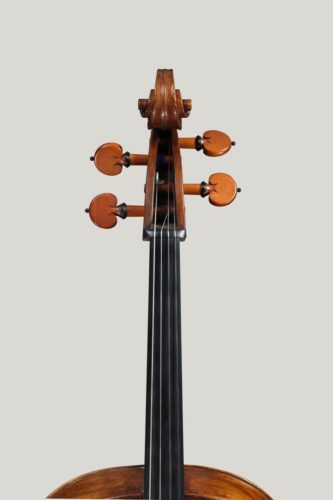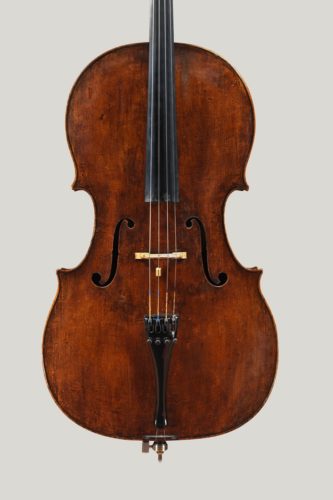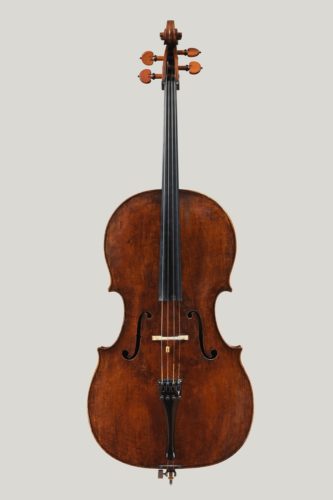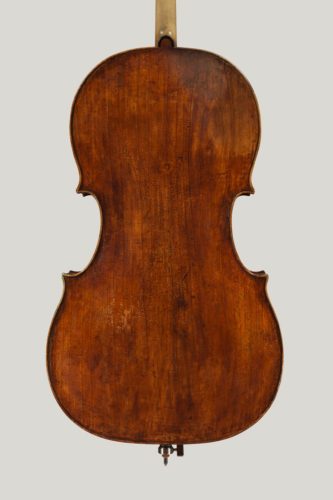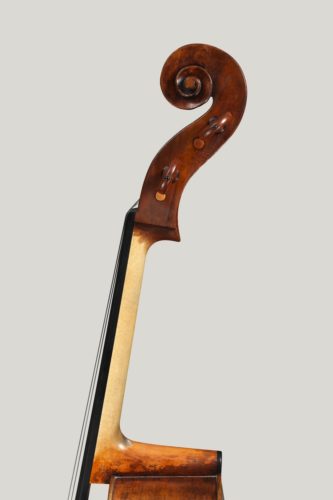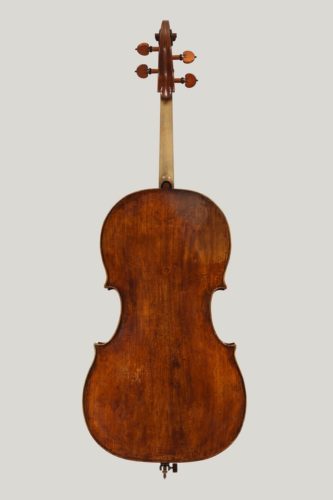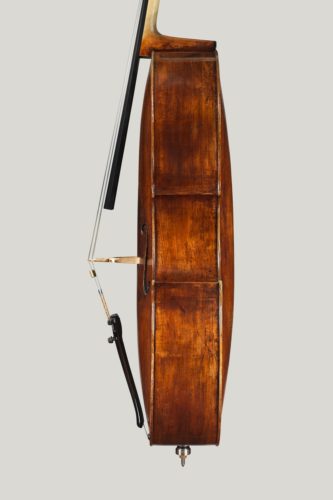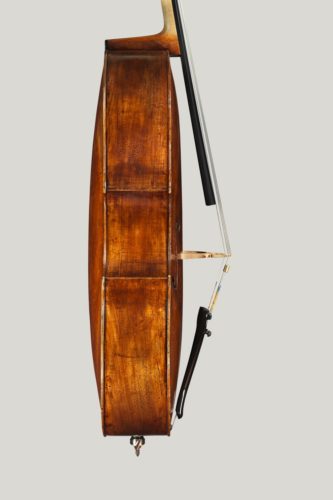Francesco Rugeri
Cello made by Francesco Rugieri in Cremona cirka 1680. Ernst Simon Glaser plays on this instrument.
Francesco Rugeri was as far as we know entirely unrelated to his contemporary Giovanni Battista Rogeri, but the name was then common in many variations of spelling. Francesco was the founder of quite an extended family of makers in Cremona, and adopted the familiar name “il Per” on his labels.
The precise circumstances of the family’s association with violinmaking are still little known. Francesco was born in 1620, but his own labelled instruments do not appear until after 1670; it has generally been assumed that he spent his early professional life in the service of Nicolò Amati, especially given the similarity of style in the work of the two makers. However, there is no documentary evidence for this, and there is a plausible theory that he was actually engaged in making unofficial copies of Amati instruments for sale abroad. (In 1685 a gentlemen from Modena complained that the instrument he had bought for 12 pistoles as an Amati turned out to be a far less valuable Rugeri.)
Whether or not Rugeri started his career as a counterfeiter, his work now is recognised as an essential part of the classical period of Cremona, readily distinguishable from that of Amati, yet perfectly wrought in that tradition. The instruments made with his own label from 1670 until his death in 1695 form a remarkable legacy. He was supported in his workshop by several sons, notably Vincenzo, Giacinto Carlo and Giovanni Battista, of whom only Vincenzo continued working long after the death of his father.
Rugeri’s most significant contribution to lutherie is probably the great cellos he made on his own, small model, and those of slightly larger Amatise size, most of which have been subsequently reduced for modern use. Earlier generations of violinmakers produced comparatively few cellos, but the late 17th and early 18th century saw a boom in their production in Cremona, and Rugeri was perhaps the most prolific.
The carefully shaped full arching of this cello of c.1680 is typical of Rugeri’s work, and provides a large airspace and a rich and profound tone. The back and ribs are made of plain poplar wood, a species quite often used for cellos because its softer, more pliant quality seems better suited to the voice of the instrument than the stiffer, more brilliant toned maple. In the middle of the upper half of the back is a plugged hole, which originally served as the location for a carrying strap, as the cello was often played in a standing position at this time. The top is made of two matched pieces of fine, straight-grained spruce, extended in width in the lower flanks by two additional pieces of similar wood. The outline form is obviously derived from Amati principles, with full, flowing lines and delicate corners. The soundholes too are very Amatise, with large finial circles, gracefully curved arm and short, narrow wings. The scroll, made of fruitwood, has suffered severe damage in the past, and the pegbox has been entirely replaced. The varnish is plentiful over the body of the cello, golden brown in colour, and shows a characteristic crackled texture.
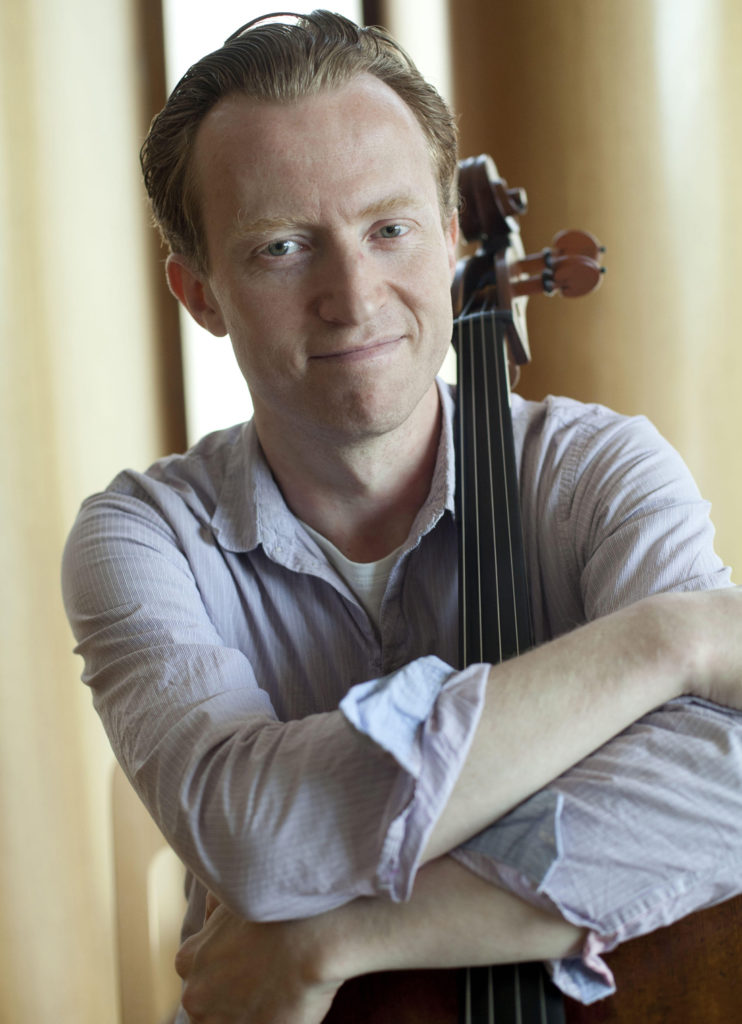
Ernst Simon Glaser
Ernst Simon Glaser has the position of principal cello in the Gothenburg Symphony Orchestra. He has also made a name for himself at a number of music festivals and at concerts in Scandinavia, the Baltics and other European countries, as well as China.
